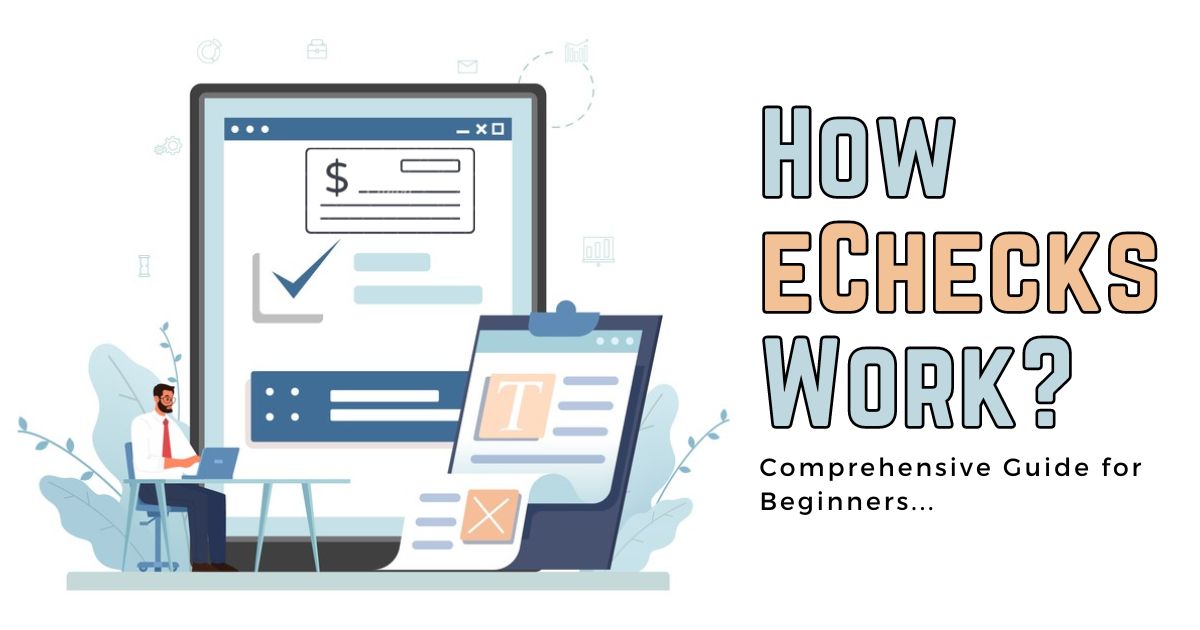
| October 17th, 2019 |
How eChecks Work? Find Out The Deets In This Post!
Ever thought how eChecks work? Ever thought are they a good alternate for your business? Is it a yes? Well, this post will break all your confusions and explain everything your mind can ponder upon. Can’t wait to begin? Let’s start…
A Quick Flashback:
With eCheck, a payer can send funds electronically from their bank account into the bank account of the payee. The process is supported through a wide network of interrelated financial institutions known as ACH or Automated Clearing House network. When we say ACH payment, it means the payment wherein funds are electronically transferred from one bank account to the another.
It was in the year 1970 when ACH network was founded by NACHA or National Automated Clearing House Association with a purpose to enhance the payroll process via quick and effectual clearing of checks. An ACH operator triggers the transaction which is then received by the receiver. As per the statistics of NACHA, approximately $43 trillion are moved over the ACH per year.
Unmasking The 4 Stages Of eCheck Processing:
1. Authorization: Payee is provided authorization by the payer depicting that the transaction is valid. In matters of online payment processors, this is taken care by the payment request system. However, contract, an online form and communication over the call are also some ways to tackle eCheck authorization.
2. Processing: Now the process of funds transfer between the payer and payee begins by the payment processor. Just like the previous step, this can also be done easily via online payment processors. Since dollar amount is by default entered in the solution, this step can be skipped upon authorization. However, beyond the online payment solutions, payee is required to enter the dollar amount as well as correct account numbers in an online form.
3. Finalize: This step is all about the verification of the payment processor to cross-check and confirm the account and routing numbers. If all the details are on point, the transaction is submitted. This is followed by the transfer of funds between the payer’s and payee’s account.
4. Deposit: Funds from payer’s account are deposited into payee’s account and transaction completes successfully. The process takes a few days and once it is done, both the payer and payee get confirmation regarding the transaction.
Echecks Ensure Improved Security Over Paper Checks:
There is no doubt that paper checks go through more channels than eChecks, which increases their chances of encountering fraud or misuse by criminals. Talking about electronic checks, information remains safe, thanks to it being transmitted to nobody else other than the financial institution.
Another drawback of paper check is that it is possible for it to miss the important information like signature or date. Moreover, it also has the risk of being processed and cleared even with incorrect details. Here electronic check enjoys an upper hand because if it contains wrong information or something is missing, transaction can’t take place unless the problem is fixed.
Automatic Detection Of Frauds:
Every time someone’s checking account details are submitted, payment gateway makes sure to confirm that individual who has entered these details holds the right to access that particular account. It does this though the check acceptance service.
From here begins the role of acceptance service and it checks that the submitted details are same as the ones submitted to the issuing bank. Payment is rejected if there happens any mismatch between the two. This way, it is assured that nothing but only the authorized people get to use the account, which then avoids possibilities of fraudulent payment information.
Apart from this, check acceptance service also checks an individual’s database as well as bank histories. In case it founds a suspicious history or a record with frauds, the transaction is flagged.
SUMMARY:
Online payments are enjoying an incredible popularity, hence, businesses should consider them and start using them. Be it accepting credit card payments or debit card payments or both, a business that offers multiple payment options always attracts the crowd and earns more profits. You can explore the internet to find out more about eCheck payments along with other forms of payments to see how businesses are adapting to them to increase customers as well as revenue.